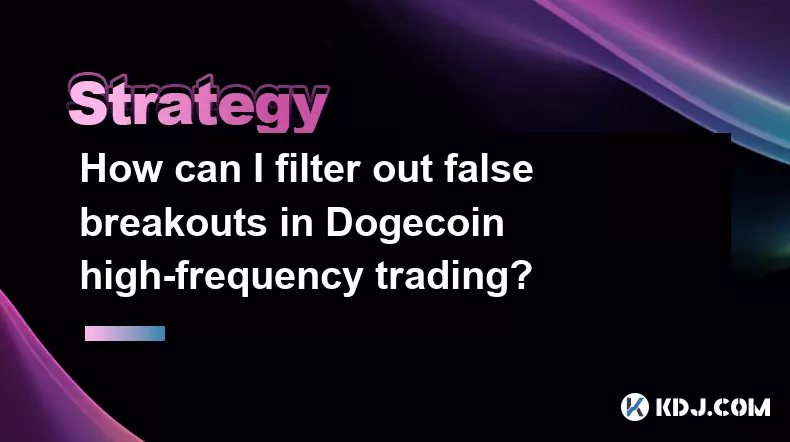-
 bitcoin
bitcoin $109547.008142 USD
0.04% -
 ethereum
ethereum $4011.838726 USD
-0.05% -
 tether
tether $1.000402 USD
-0.01% -
 xrp
xrp $2.798606 USD
0.88% -
 bnb
bnb $970.877944 USD
1.39% -
 solana
solana $202.237275 USD
-0.95% -
 usd-coin
usd-coin $0.999673 USD
0.00% -
 dogecoin
dogecoin $0.229294 USD
-1.15% -
 tron
tron $0.336370 USD
-0.45% -
 cardano
cardano $0.777260 USD
-1.66% -
 hyperliquid
hyperliquid $45.503019 USD
1.73% -
 ethena-usde
ethena-usde $1.000362 USD
0.01% -
 chainlink
chainlink $20.785303 USD
-1.10% -
 avalanche
avalanche $28.755822 USD
-0.11% -
 stellar
stellar $0.358303 USD
-0.48%
How to handle crypto FUD (Fear, Uncertainty, and Doubt)?
Understanding crypto FUD—its sources, impact, and how to combat it—is essential for making informed investment decisions in the volatile cryptocurrency market.
Jul 13, 2025 at 05:56 pm

Understanding the Nature of Crypto FUD
In the cryptocurrency space, FUD (Fear, Uncertainty, and Doubt) is a common tactic used to manipulate market sentiment. FUD often comes in the form of misleading or false information spread intentionally to provoke panic selling or discourage investment in a particular cryptocurrency or blockchain project. Understanding the source and intent behind FUD is crucial for any crypto investor or enthusiast. Whether it's a false regulatory rumor, a misleading news headline, or an anonymous social media post, recognizing the pattern of FUD dissemination helps in making rational decisions.
Recognizing the psychological impact of FUD is the first step toward managing it effectively. Many investors react emotionally to negative news without verifying its authenticity. This emotional response can lead to poor decision-making, such as selling assets at a loss or avoiding promising projects.
Verifying the Source of Information
One of the most effective ways to combat FUD in crypto is to verify the credibility of the information source. In a decentralized and often anonymous environment, misinformation can spread rapidly. Always cross-reference claims with official announcements, whitepapers, or trusted news outlets. For example, if a new regulation is rumored to affect a cryptocurrency, check government or financial authority websites for confirmation.
- Check official websites and verified social media accounts of the project or organization involved.
- Review statements from developers or team members directly involved in the project.
- Use fact-checking platforms like Snopes or Coindesk to validate claims.
Avoid relying solely on community forums or unverified Twitter accounts when assessing the validity of a claim. These platforms are often breeding grounds for speculation and misinformation.
Staying Informed Through Trusted Channels
To remain resilient against FUD, it’s essential to build a network of trusted information sources. Following reliable crypto news platforms, verified developers, and community moderators can help filter out noise and misinformation. Subscribing to newsletters, joining official Discord or Telegram groups, and participating in verified AMA (Ask Me Anything) sessions are excellent ways to stay informed.
- Subscribe to reputable crypto news outlets such as Coindesk, Cointelegraph, or The Block.
- Follow verified project accounts on social media to receive updates directly from the source.
- Engage in official community discussions to ask questions and clarify doubts.
Being part of a well-moderated community can also help identify and counteract FUD campaigns before they gain traction. Moderators and experienced members often debunk false claims quickly.
Developing a Rational Investment Strategy
A strong defense against FUD lies in having a clear investment strategy based on fundamentals rather than emotions. Understanding the technology, use case, and long-term potential of a cryptocurrency helps investors remain calm during market volatility. Creating a personal investment thesis and sticking to it can prevent reactionary decisions driven by FUD-induced panic.
- Research the team, roadmap, and real-world applications of a project before investing.
- Set clear entry and exit points based on your investment goals, not on rumors.
- Diversify your portfolio to reduce the impact of short-term volatility caused by FUD.
Avoid making investment decisions based solely on social media trends or fear-based headlines. Instead, rely on your own research and analysis to make informed choices.
Engaging in Constructive Dialogue
When encountering FUD, one of the best responses is to engage in constructive and respectful dialogue. Instead of reacting with hostility or ignoring the claims, ask clarifying questions and provide evidence-based counterpoints. This not only helps dispel misinformation but also encourages a healthier crypto community.
- Ask for sources or evidence when someone makes a bold claim.
- Provide links to credible information that supports your position.
- Encourage critical thinking by asking others to evaluate the credibility of the information they consume.
Promoting a culture of transparency and education helps reduce the influence of FUD in the crypto space. By fostering informed discussions, the community can collectively resist misinformation.
Frequently Asked Questions (FAQs)
What is the difference between FUD and legitimate criticism in crypto?FUD typically involves spreading misleading or false information with the intent to create panic or discourage investment. Legitimate criticism, on the other hand, is based on factual analysis and aims to highlight real issues or concerns about a project or technology.
How can I tell if a news article is FUD?Look for signs such as unverified claims, lack of credible sources, sensationalist language, or a clear bias. Cross-check the information with official statements or trusted news outlets to determine its validity.
Should I ignore all negative news in crypto?No, not all negative news is FUD. Some news may highlight real risks or challenges. The key is to assess the credibility of the source and the evidence presented before reacting emotionally.
Can FUD affect the long-term value of a cryptocurrency?While FUD can cause short-term price drops, the long-term value of a cryptocurrency is determined by its underlying technology, adoption, and utility. Projects with strong fundamentals often recover from FUD-driven dips.
Disclaimer:info@kdj.com
The information provided is not trading advice. kdj.com does not assume any responsibility for any investments made based on the information provided in this article. Cryptocurrencies are highly volatile and it is highly recommended that you invest with caution after thorough research!
If you believe that the content used on this website infringes your copyright, please contact us immediately (info@kdj.com) and we will delete it promptly.
- Ethereum, Bitcoin Dominance, and the Altcoin Rally: A New York Minute on Crypto
- 2025-09-28 12:25:15
- RLUSD, XRP, and Open Interest: Decoding the Dynamics
- 2025-09-28 12:25:15
- Crypto Meme Coins: Unveiling the 2025 Potential
- 2025-09-28 12:25:16
- Crypto's Comeback: Solana, Polygon, and the Hunt for the Next Moonshot
- 2025-09-28 12:25:16
- Stablecoins, Financial Transactions, and the Future World: A New York State of Mind
- 2025-09-28 12:30:12
- XRP, Competitor, PDP Climb: Decoding the Crypto Landscape in 2025
- 2025-09-28 12:30:12
Related knowledge

Practical parameter settings for a Bitcoin multi-timeframe moving average system
Sep 18,2025 at 10:54pm
Optimizing Timeframe Combinations for Bitcoin Trading1. Selecting appropriate timeframes is crucial when building a multi-timeframe moving average sys...

How can I filter out false breakouts in Dogecoin high-frequency trading?
Sep 22,2025 at 01:00am
Understanding False Breakouts in Dogecoin Trading1. A false breakout occurs when Dogecoin's price appears to move beyond a defined support or resistan...

Techniques for identifying tops and bottoms in the Bitcoin on-chain NVT model
Sep 20,2025 at 07:54pm
Understanding the NVT Model in Bitcoin Analysis1. The Network Value to Transactions (NVT) ratio is often described as the 'P/E ratio' of the cryptocur...

What does the surge in open interest in Bitcoincoin futures mean?
Sep 20,2025 at 11:18pm
Understanding the Surge in Dogecoin Futures Open Interest1. A surge in open interest within Dogecoin futures indicates a growing number of active cont...

How can I use the Ethereum USDT premium to gauge market sentiment?
Sep 18,2025 at 11:55pm
Understanding the Ethereum USDT Premium1. The Ethereum USDT premium refers to the price difference between USDT (Tether) traded on Ethereum-based plat...

What should I do if Ethereum staking yields decline?
Sep 20,2025 at 06:18am
Understanding the Causes Behind Declining Ethereum Staking Yields1. The Ethereum network transitioned to a proof-of-stake consensus mechanism with the...

Practical parameter settings for a Bitcoin multi-timeframe moving average system
Sep 18,2025 at 10:54pm
Optimizing Timeframe Combinations for Bitcoin Trading1. Selecting appropriate timeframes is crucial when building a multi-timeframe moving average sys...

How can I filter out false breakouts in Dogecoin high-frequency trading?
Sep 22,2025 at 01:00am
Understanding False Breakouts in Dogecoin Trading1. A false breakout occurs when Dogecoin's price appears to move beyond a defined support or resistan...

Techniques for identifying tops and bottoms in the Bitcoin on-chain NVT model
Sep 20,2025 at 07:54pm
Understanding the NVT Model in Bitcoin Analysis1. The Network Value to Transactions (NVT) ratio is often described as the 'P/E ratio' of the cryptocur...

What does the surge in open interest in Bitcoincoin futures mean?
Sep 20,2025 at 11:18pm
Understanding the Surge in Dogecoin Futures Open Interest1. A surge in open interest within Dogecoin futures indicates a growing number of active cont...

How can I use the Ethereum USDT premium to gauge market sentiment?
Sep 18,2025 at 11:55pm
Understanding the Ethereum USDT Premium1. The Ethereum USDT premium refers to the price difference between USDT (Tether) traded on Ethereum-based plat...

What should I do if Ethereum staking yields decline?
Sep 20,2025 at 06:18am
Understanding the Causes Behind Declining Ethereum Staking Yields1. The Ethereum network transitioned to a proof-of-stake consensus mechanism with the...
See all articles










































































